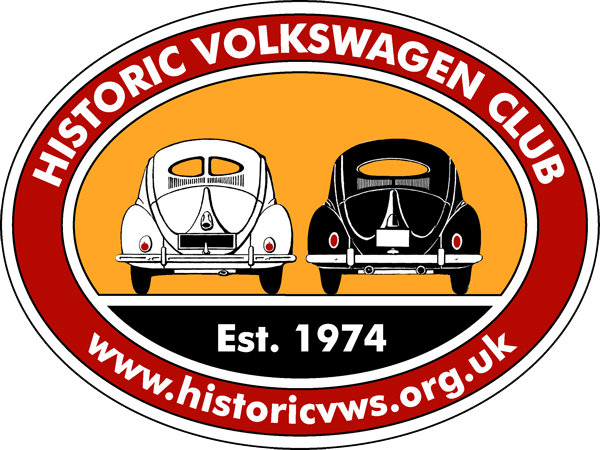VisitToWolfsburg
A Visit to Wolfsburg
by Wolfgang Gips
[Wolfgang Gips reports on a recent pilgrimage to the birthplace of the Beetle where he went on a photo safari in the old part of city]
I am pleased to say that the old gnarled oak tree at the Klieversberg, that you saw in the Spring edition 2006 of our magazine, in the pictures from 1939 and 1949, still exists today!
Every year in spring when nature again bursts into blossom, the VW-scene awakens from its winter-sleep. In Germany it starts in Hannover on 1st May with the 'Maikafer-(cockchafer-) meeting', followed at the beginning of June by the big event of Beetle & Co. in Wolfsburg and, last but not least, the spring meeting of the Brezelfenstervereinigung. There are also many small regional shows. What shall I do, as to take part in every event is nearly impossible?
One highlight of the show in Wolfsburg is, before the regular start on the Saturday, the special visit to the factory halls on the Friday afternoon, by driving to the factory site in your own Volkswagen, up to sector 2, where it starts!
Great - my last visit to the 'Wolfsburg Motor Works' was in 1988 (my very first was in 1973, as the Beetle was still made on the assembly line). Sure, in the meantime, many things would have been changed - and maybe I could take a look for the old oak tree at the Klieversberg. So I decided to visit the Wolfsburg Beetle show early - before it started!
High noon on the Friday I started out from Hannover, which is only 80 km distance from Wolfsburg, in bright sunshine - not along the Autobahn, but across the old roads to Gifhorn, where I take a break at the windmill museum, and then on to my destination - 'Kleiner Wagen in GroBer Fahrt' (not 'fart'!).
Every time I arrive in Wolfsburg by this route, it gives me the creeps, when the four big chimneys of the power station appear on the horizon. I do not go straight to the showground at the Allerpark, but right, along by the towers of the Autostadt, across the Berliner Bridge and along the Berliner Ring in the direction of the city.
At the crossing of the Friedrich-Ebert-Street the lights are red. Next to me on my left side a New Beetle also stops - obviously you can find them in greater numbers here than anywhere else, especially the lovely (?) pale beige convertibles!
Making short eye-contact with the driver, I perceive that this New Beetle is also black: "Well, at least the colour is the same!" - "Yes, I wondered, if we should swap them!" - "No, thanks - I think not really". The lights have changed, up, up and away.
Seemingly, almost automatically, my 1950 Standard is finding its way to the Klieversberg, my city-map ended just before this area, and soon the city-hospital and the TV-tower are reached and I am parking by the roadside.
On foot, I go up the small path to the forest, along the Porsche-shack, where today there is a small art gallery, along the fence, and around the corner it opens up onto that breathtaking view, over the meadows of the Klieversberg down to the city with the skyline of the Volkswagenwerk in the background:
I am pleased to say that the old gnarled oak tree at the Klieversberg, that you saw in the Spring edition 2006 of our magazine, in the pictures from 1939 and 1949, still exists today!
Every year in spring when nature again bursts into blossom, the VW-scene awakens from its winter-sleep. In Germany it starts in Hannover on 1st May with the 'Maikafer-(cockchafer-) meeting', followed at the beginning of June by the big event of Beetle & Co. in Wolfsburg and, last but not least, the spring meeting of the Brezelfenstervereinigung. There are also many small regional shows. What shall I do, as to take part in every event is nearly impossible?
One highlight of the show in Wolfsburg is, before the regular start on the Saturday, the special visit to the factory halls on the Friday afternoon, by driving to the factory site in your own Volkswagen, up to sector 2, where it starts!
Great - my last visit to the 'Wolfsburg Motor Works' was in 1988 (my very first was in 1973, as the Beetle was still made on the assembly line). Sure, in the meantime, many things would have been changed - and maybe I could take a look for the old oak tree at the Klieversberg. So I decided to visit the Wolfsburg Beetle show early - before it started!
High noon on the Friday I started out from Hannover, which is only 80 km distance from Wolfsburg, in bright sunshine - not along the Autobahn, but across the old roads to Gifhorn, where I take a break at the windmill museum, and then on to my destination - 'Kleiner Wagen in GroBer Fahrt' (not 'fart'!).
Every time I arrive in Wolfsburg by this route, it gives me the creeps, when the four big chimneys of the power station appear on the horizon. I do not go straight to the showground at the Allerpark, but right, along by the towers of the Autostadt, across the Berliner Bridge and along the Berliner Ring in the direction of the city.
At the crossing of the Friedrich-Ebert-Street the lights are red. Next to me on my left side a New Beetle also stops - obviously you can find them in greater numbers here than anywhere else, especially the lovely (?) pale beige convertibles!
Making short eye-contact with the driver, I perceive that this New Beetle is also black: "Well, at least the colour is the same!" - "Yes, I wondered, if we should swap them!" - "No, thanks - I think not really". The lights have changed, up, up and away.
At the next red lights, crossing Braunschweiger Street, the 'Golf-Coupe' arrives again by my side. "Why, your car doesn't have an H-licence-plate?" - "Look, I have H-licence-plates on my car - the H is just in front!" To understand this little joke, you must know that here in Germany you pay less taxes for historic cars, and an 'H' is added to the normal registration number. Because I bought my Split in 1974 with these plates on it, they are also 'historic' for me, and I would never change them.
Seemingly, almost automatically, my 1950 Standard is finding its way to the Klieversberg, my city-map ended just before this area, and soon the city-hospital and the TV-tower are reached and I am parking by the roadside.
On foot, I go up the small path to the forest, along the Porsche-shack, where today there is a small art gallery, along the fence, and around the corner it opens up onto that breathtaking view, over the meadows of the Klieversberg down to the city with the skyline of the Volkswagenwerk in the background:
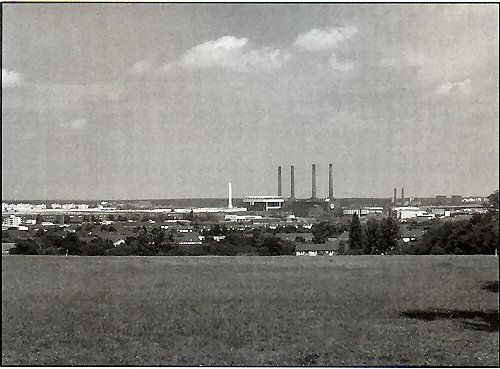
But where could the old oak have been? I had taken with me a print-out of both pictures for my orientation. There below in the 'valley' the line of houses of the Heinrich-Heine-Street, which you can also see on the photo from 1949. The Tullio-Cianetti Hall is only on the postcard from 1939, as it burned down before the war was over. Today, the technical college is erected on the site, but I can't recognise it from where I was standing.
I go down to the meadow and enjoy the wonderful view. As I reach the boundary below, I meet a lady walking with her dog: "Hello, would you like to see how this view was more than 50 years ago?" - "Yes, thank you, but these pictures I have seen before! Oh, you are searching for that old tree?! You can find it above, at the memorial, where they just excavated an old bunker from the war.
There I see that the remains of the old tree are still standing, nicely surrounded by a fence!
I go down to the meadow and enjoy the wonderful view. As I reach the boundary below, I meet a lady walking with her dog: "Hello, would you like to see how this view was more than 50 years ago?" - "Yes, thank you, but these pictures I have seen before! Oh, you are searching for that old tree?! You can find it above, at the memorial, where they just excavated an old bunker from the war.
There I see that the remains of the old tree are still standing, nicely surrounded by a fence!
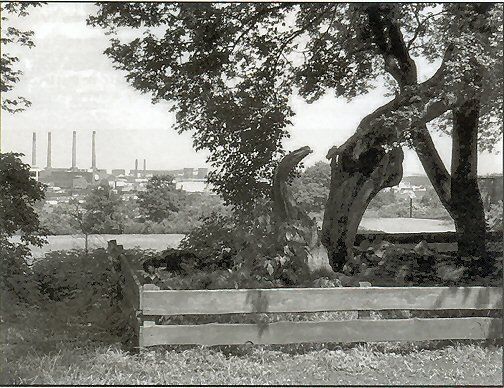
You won't believe it, but more than a half century ago it started to die and, today, this very ancient oak is in a way a memorial to nature, next to a memorial of crime against humanity.
But now I must hurry to reach the show ground, my Beetle-friends are still waiting. As it is still early only a few participants have arrived, so we have a better opportunity for small talk with each other. In a convoy we drive directly to the eastern entrance and across the factory ground up to the administration building at the western end of the factory frontage. This time the sightseeing tour of the VW factory is very comfortable as, instead of a walk for miles on foot, like in the past, now we are driven in a luxurious upholstered Golf-train through the different workshop halls!
Club member Hans Wegener is sitting next to me in the train, and old memories are coming back to him, as he used to work on the assembly lines, in the 50's and 60's - he was one of the thousands of young workers, who were building the Beetle.
Today this is mainly done by robots at Golf & Co. We were told that automation now covers 98% of the production process!
After the visit to the factory we go back to the show ground at the Allerpark, but I can't stay there for long and, after a short break for refreshment, I am driving back for a 'photo safari' into the 'old town'! Here are some of the pictures I took.
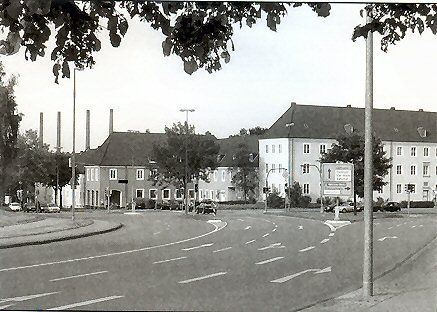
A view from the Laagberg- into the Lessingstreet, right the Heinrich-Heine-Street. The buildings with the characteristic archways you can also find in the pictures in 'Kleiner Wagen in Grosser Fahrt'.
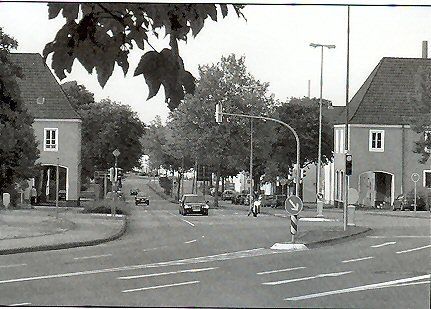
According to the city map from 1941, these streets, together with Goethe-, Kleist- and Schillerstreet (at their northern end stood the Tullio-Cianetti-Hall), are the oldest ones in Wolfsburg

Even the buildings in the Lonsstreet, right the way into the Scheffelhof, are part of the earliest built-up area of Wolfsburg

In 1950, the Pestalozzialley, crossing Rathausstreet, was only a small field-path. Along the Christophoruschurch on the way left into the Friedrich-Ebert-Street .
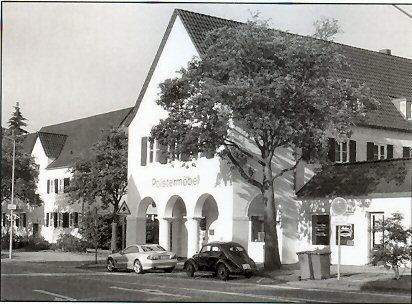
We can find another historic building between Stresemann and Windhorststreet, where today an upholstery workshop is established.

Still there is much to explore in historic Wolfsburg - nowhere else can you can find so much of the original architecture. (Have a look at my "H-licence-plate"
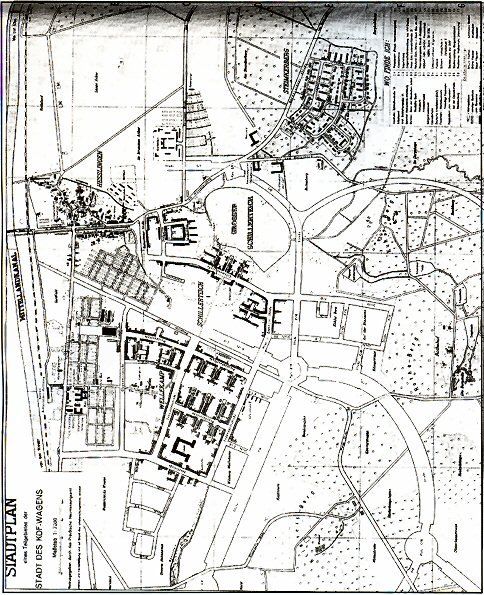
The map of Wolfsburg in 1941 shows you how much of the city was already built up at that time and what else was still planned. After the end of World War II much of the original plans would have been altered, and the names of the streets became demilitarised very quickly. Hobby-historians today can find many old pictures about Wolfsburg in various publications about the city and the VW factory - or you can try on the internet using the key word 'Wolfsburg' in 'Google' for example.
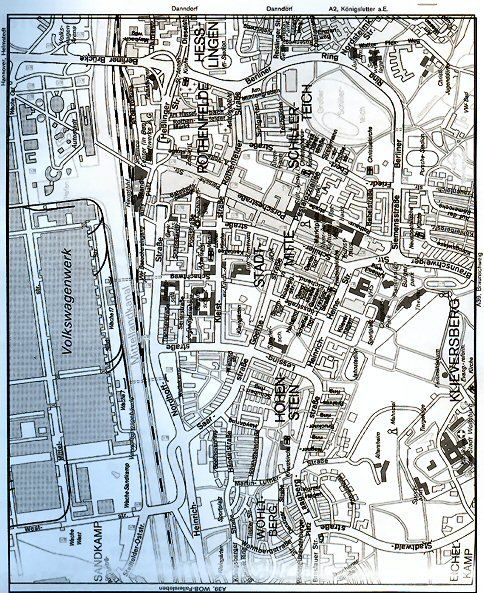
For comparison, the city map of 2003.
Full of new memories - and a full memory card in my digital camera - I returned to the show ground again where, a lot of my VW friends and their cars have now appeared on the scene. After some nice hours of social gathering, with roasted sausages, a few beers and many new acquaintances, it is dawn when I make my way back to Hannover. Even the day before the regular start of a VW meeting can be very interesting!
Back
Full of new memories - and a full memory card in my digital camera - I returned to the show ground again where, a lot of my VW friends and their cars have now appeared on the scene. After some nice hours of social gathering, with roasted sausages, a few beers and many new acquaintances, it is dawn when I make my way back to Hannover. Even the day before the regular start of a VW meeting can be very interesting!
